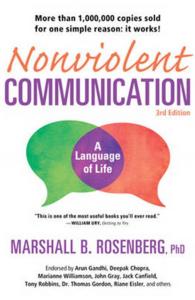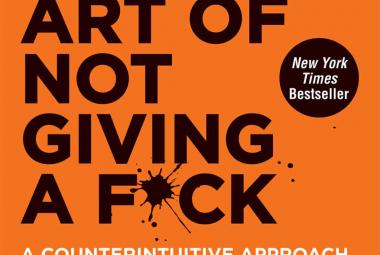In Nonviolent communication, Marshall Rosenberg describes a way of communicating with empathy and focus on personal needs, and without judgement. Nonviolent means to bring out the best in yourself by letting the way you communicate be led by love, respect, understanding, appreciation, compassion and care, instead of letting it be led by egocentrics, greed, prejudices and aggression.
This article describes: the four elements of nonviolent communication, the importance of perceiving without judging, the difference between feelings and interpretations, and how to take matters into your own hand by thinking in terms of choice rather than must.
Nonviolent communication consists of two parts: to express yourself honestly and to listen honestly. Both parts include using the FOUR ELEMENTS OF NONVIOLENT COMMUNICATION: observation, feelings, needs and requests.
Before you react in a certain situation, it is important to take a moment and reflect on what you observe and what impact the observation has on your feelings. When you have identified the feeling you feel in the situation, you can identify the need you have that led to that specific feeling, which in the end can lead to a request on how the other person can fulfill your personal need.
This can help you when you would like to speak, but also when listening to another person. Try to listen carefully and try to identify the need the other person has. One example is that more often than not, people just want to ventilate a certain story to make them feel better and are not interested in hearing a solution from you.
The first step, to be able to observe the situation includes the trait to PERCEIVE WITHOUT JUDGING. Rosenberg explains that the way other people behave can lead to your personal feelings, but they can never be the true cause. Feelings are the result of your personal need. One example that highlights this is the situation where you are meeting a friend at your house and the friend shows up an hour late. When you yourself still have the need to finish some other things, you do not mind the other person being late. If you do not have the need to do anything else, your friend being late can make you angry or disappointed. In this case, your feelings are not caused by your friend being late, but by your lack of needing to finish up something else.
Showing empathy to others will also reduce negative feelings you might have. When you feel annoyed in traffic because the person in front of you is driving slowly, try to put yourself in his or her situation. He or she could be lost, and might need a little patient from other drives so that he or she can find the way back again.
The next topic Rosenberg describes is the definition of FEELINGS. In This topic, Rosenberg describes what can be described as pure feelings and what are actually interpretations and judgments. Sentences like: ´I feel you do not love me´ are not describing a feeling at all, but are actually a hidden attack on the other person, in this case describing that they fail to fulfill your need to feed loved.
The following words are examples of words that are used in our language that fall in this category of interpretation and judgement: deceived, manipulated, unheard, pressured and neglected. All of these words are a hidden attack on the other person, because they insinuate that they are the cause of your feeling, for which we learned that can never really be the cause.
Better examples of words that describe feelings which result unmet needs are: powerless, alone, jealous, cranky and depressed. These words put the individual itself more in focus, without suggesting the other person has fault.
Positive feelings that can be used to describe certain needs being fulfilled are: relaxed, proud, satisfied, feeling happy or touched.
Next to recognizing feelings only in a way that the do not reflect on others, Rosenberg explains the importance of taking responsibility for your own choices, which do influence your emotions. The trick is to REPLACE ´MUST´ WITH ´CHOOSE´ which can be done in three steps:
Step 1: make a list of all the things you think that you must do. These are the activities that you do not enjoy doing, but you do them anyway because you believe that you have no choice.
Step 2: rewrite all the point on the list from step 1, but start every sentence with: ´I choose to…´ This step usually generates some internal resistance.
Step 3: replace the full stop of the second sentence with a comma, and add a sentence which starts with ´because I would like to…´. Writing in this way helps to clarify what needs you are trying to fulfill with the stuff you do not really enjoy doing.
When we focus ourselves on nonviolent communication, we create a reciprocal flow of communication in which compassion between people can evolve in a natural way. We can talk about our emotions and needs in such a way that makes it easier for others to show empathy and enrich our lives. To me, this is a wonderful thought.
Mastering the power to communicate nonviolently, without judging others and including responsibility for your own feelings, will lead to a better world of less anger and the possible violence that results from that anger.
Lees verder:
The Corporate Athlete - K.Gonnissen & A.Goudsmet (summary)
REFERENCE:
Rosenberg, M.B, 2011, Geweldloze Communicatie – Ontwapenend, doeltreffend en verbindend, Rotterdam (NL): Lemniscaat BV (order this book)















